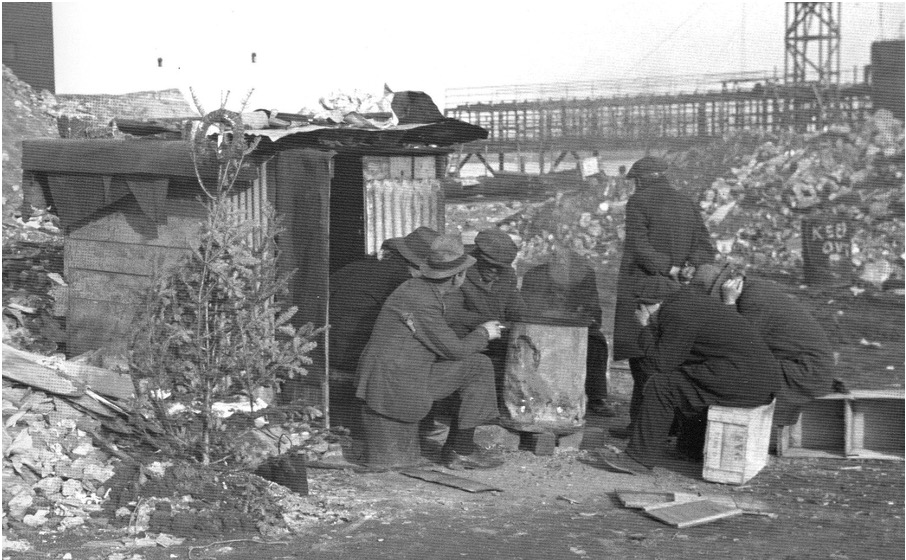Comments
PLANNING WATCH - The recent removal of a homeless encampment on Selma Avenue in LA’s Hollywood neighborhood offers a peek into the bleak future of the housing crisis. Like Selma Avenue’s four block long encampment, growing numbers of unhoused people are being forced to other sidewalks and bridges, as well as into short-term interim shelters. Repressive responses, such as homeless sweeps, anti-camping ordinances, and chain link fences, like those on the San Vicente Boulevard median strip in LA’s 5th Council District, have become the default homeless policy for most US cities.
The election of “progressive” Councilmembers, such as Democratic Socialists of America (DSA) member, Hugo Soto-Martinez, whose district includes the former Selma Avenue homeless encampment, have not made a difference. Elected officials, like him, can’t or won’t address the underlying causes of the homeless crisis. As a result, the number of unhoused people steadily increases. In fact, the homeless population of the United States has continually risen since 2017, growing by 10 percent last year, including in Los Angeles.
Since local officials, regardless of their political labels, cannot effectively address homelessness, they respond to complaints about unhoused people with police sweeps and municipal “clean-up” exercises. Instead of addressing the structural causes of homelessness, local officials opt for short-term fixes, typically forcing the unhoused to move to other streets or into temporary housing, where 20 percent soon leave.
What are the underlying causes of homelessness that elected officials, their dutiful policy analysts, and the little-sir-echoes in the media do not understand?
Cause #1: The primary response of cities and states to rising homelessness, up-zoning, makes the housing crisis worse, not better. Because upzoning increases land values and housing prices, it leads to flipping and the construction of highly profitable high-rise apartment buildings.
Cause #2: Economic inequality and poverty, not just in LA, but in the entire country, is growing. Since shelter is not a human right in the United States, those suddenly priced out of housing end up living in cars, on sidewalks and tents, or doubling up with friends and relatives.
Cause #3: Housing prices rise because real estate companies pay top dollar for houses and apartments as speculative investments.
Cause #4: HUD and CRA public housing programs were terminated, beginning in the early 1970s. The responsibility for non-market housing devolved from the Federal government to cash-strapped state and local officials easily lobbied by real estate developers.
Cause #5: There is lax enforcement of density bonuses granted to new luxury apartments. This allows developers to evade zoning laws regulating height, density, and parking requirements.
Cause #6: False narratives about homelessness are widely publicized. They falsely claim that homelessness is not caused by the factors listed above, but by a housing shortage linked to single-family zoning.
Cause #7: Government budgets swung away from domestic needs, such as shelter, to the police and the military.
These trends have combined to create a perfect storm of homelessness. Until the structural causes of the housing crisis end, there will be more encampments, like the one on Selma Avenue in Hollywood. The developers, YIMBYs, academics, media, elected officials, and technical experts can rattle on about an imagined housing shortage, but their solution, upzoning, increases costs and therefore makes the housing crisis worse.
One factor missing from their analysis is the shortage of well-off tenants who can buy or rent the expensive private apartments and McMansions that developers build. As a result, many of their new, upscale units sit vacant. In contrast, the number of vacant low-income apartments has shrunk. As for band-aid programs that address homelessness, such as LA’s Inside Safe program, they can’t keep up with the increasing numbers of people priced out of housing. The structural causes of the housing crisis – laid out above and totally preventable – will continue. The result will be more overcrowding, more homelessness, more encampments, more anti-camping ordinances, and more police sweeps.

Hooverville during the housing crisis of the 1930s Great Depression.
The United States experienced another severe housing crisis in the 1930s, when homeless encampments were called Hoovervilles. That housing crisis was eventually resolved by massive public housing construction and World War II. The chance that history will repeat itself is not likely. While war is on the horizon, the resurrection of public housing programs is a long shot unless mass movements, like the LA’s Tenants Union, successfully promote it from below.
(Dick Platkin is a retired Los Angeles city planner who writes about local planning issues for CityWatchLA. He is also a board member of United Neighborhoods for Los Angeles (UN4LA). Previous columns are available at the CityWatchLA archives. Please send questions and corrections to [email protected].)

















